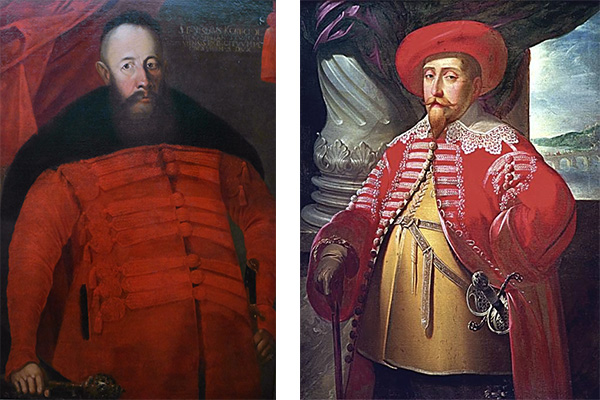 |
| Polish Husaria clash with Swedish horse and commanded shot. 28mm |
Introduction
The Battle of Dirschau / Tczew in 1627 took place during a series of wars fought between Sweden and the Polish-Lithuanian Commonwealth in the 17th century. It set the famous Gustav II Adolph, King of Sweden, against the Commonwealth’s most experienced and senior general, Field Crown Hetman Stanisław Koniecpolski.
 |
| The two commanders at the Battle of Dirschau/Tczew - Stanislaw Koniecpolski and Gustav II Adolph |
Historical Background
At the start of the 17th century the major powers in the Baltic region were Sweden, Poland-Lithuania, Denmark, and Muscovy (Russia). Their rivalries were complicated by King Sigismund III of Poland (and Grand Duke of Lithuania) also having been the King of Sweden until deposed in 1604 by his uncle, Charles IX. The conflicts for control of the Baltic were set against the backdrop of the Thirty Years War (TYW, 1618-48) taking place in central Europe. Roman Catholic Poland had strong ties with the Imperial coalition in the TYW, while Protestant Denmark backed the Protestant coalition and was effectively knocked out of the TYW after a disastrous attempted intervention. When Gustav II Adolph succeeded his father as King of Protestant Sweden, while keen to aid his Protestant brethren in Germany, he first had to deal with his rival cousin Sigismund and the Commonwealth.
Campaign Background
In 1626 Gustav invaded Polish Prussia with an aim to take the vital city of Danzig that was a commercial hub for the region. By 1627 he had captured the town of Dirschau less than 25 miles south of Danzig (known as Dirschau to German speakers in Polish Prussia, and as Tczew to Polish speakers). While having a numerically superior force, Gustav was not confident to meet the Poles on the open battlefield due to the effectiveness of their cavalry. He therefore had built a fortified camp outside Dirschau which the Poles, with their weaker infantry and artillery forces, could not storm. Koniecpolski positioned his army’s camp, protected by a series marshes, streams and canals near to Dirschau, keeping the Swedes bottled up in their defences and unable to threaten Danzig further.
 |
| An interpretation of the terrain and battle developed by the Swedish Army General Staff in the 1930s. |
The Battle of Dirschau took place over two days in August 1627. Swedish skirmishers, reconnoitring the crossings over the marshes in front of the Polish camp, were initially seen off by Polish cavalry pickets. Both sides reinforced their skirmish parties and the Swedes, eventually being chased back towards the town, sought to draw the pursuing Polish cavalry under the guns of their forticiations. Koniecpolski, as a wily and experienced commander, saw through the ruse. Content that the Swedes were bottled up again, Koniecpolski began to withdraw his forces back to the Polish camp. At this point the Swedes unexpectedly attacked in strength and managed to wrong-foot the Poles momentarily. It is at this point the wargame scenario for the battle starts.
Wargame Scenario
I have chosen to combine the action of the two days of the historical battle in to one scenario. Historically the first day’s action was a ‘to and fro’ cavalry engagement, with the second day being an assault by the Swedish infantry on the levees, that crossed the marshes, which were fortified by the Poles. In my alternate scenario the Swedish cavalry attack is backed up immediately with the Swedish infantry formations, and the levees are already fortified and held by the Polish infantry. This simplification for the tabletop enables getting the maximum numbers of figures arrayed to maximise the spectacle of the confrontation.
 |
| Scenario deployment. Swedish in blue and Polish-Lithuanian in red. |
The wargame scenarios starts with the Swedish forces, taking the initiative, and attacking while the Polish forces are manoeuvring, back across the levees through the marshes, to the Polish camp. The scenario assumes it takes the Swedish infantry sometime to march out of their camp and form up in battle array, just as it did on the actual second day of the battle. To take advantage of the initiative the Swedes need to attack with their cavalry. Test games have shown that, if the Swedes allow the Polish cavalry room and time to deploy fully on the eastern side of the marshes, then the Swedes risk being overcome by coordinated Hussar charges.





No comments:
Post a Comment